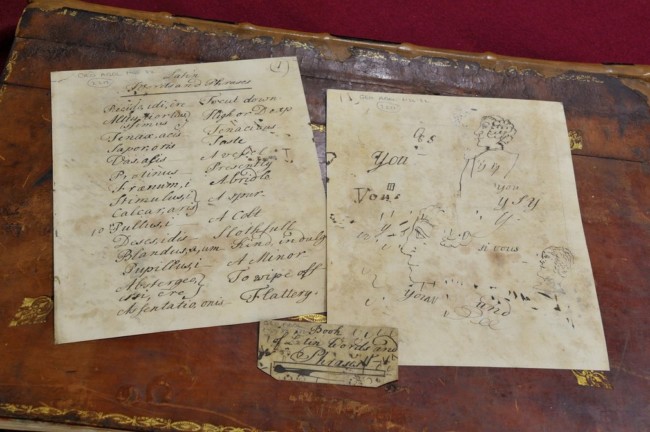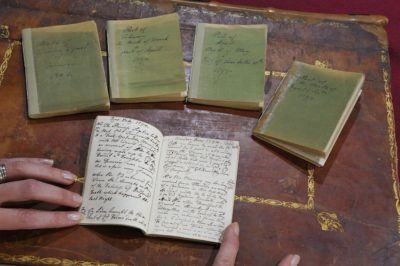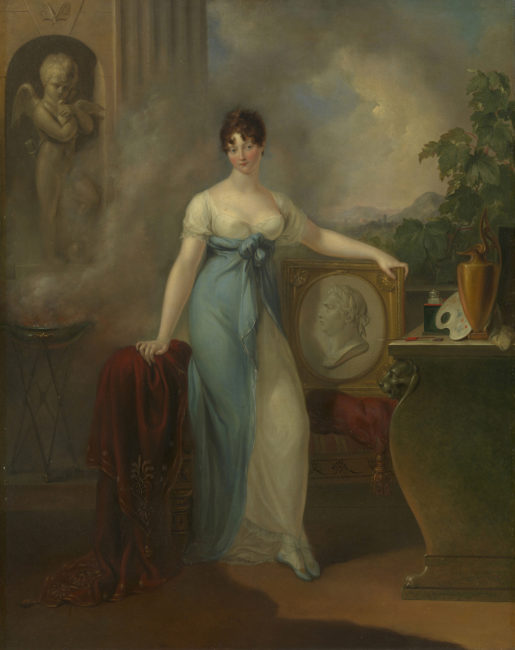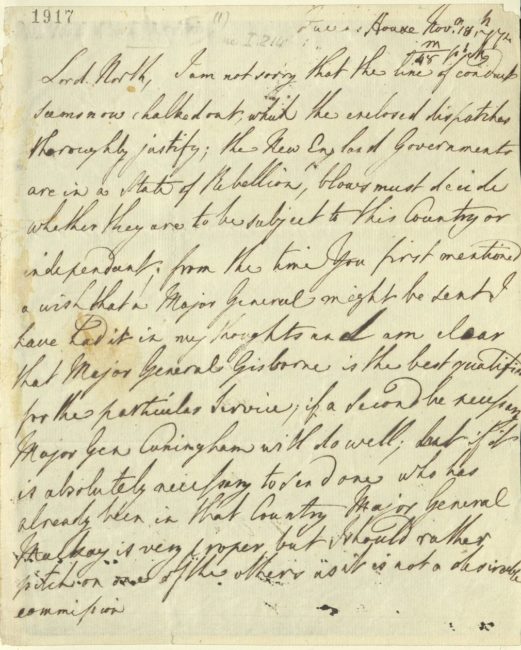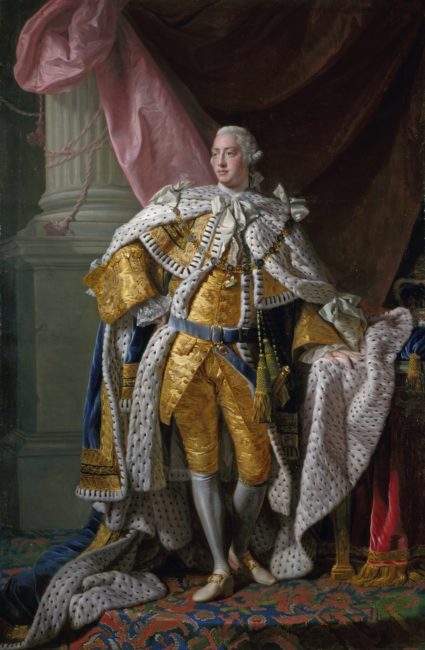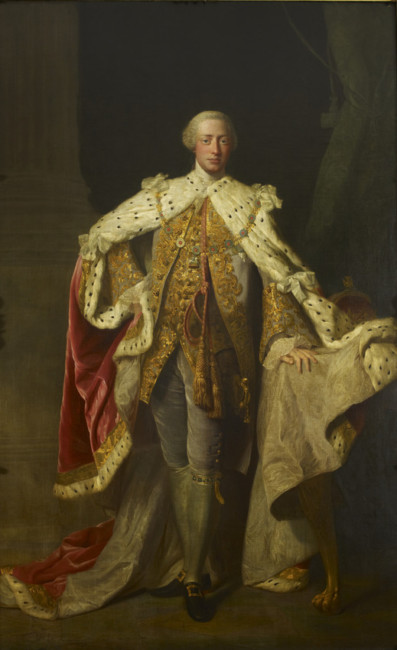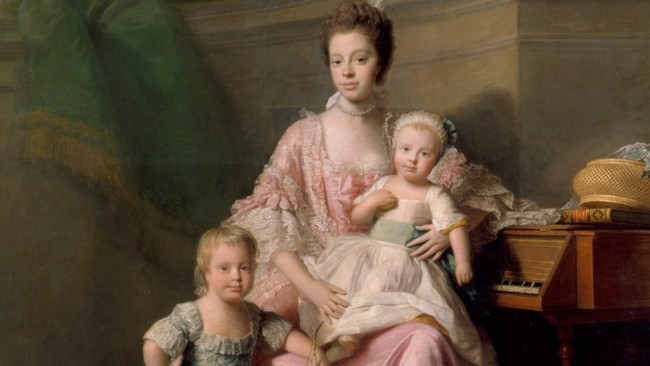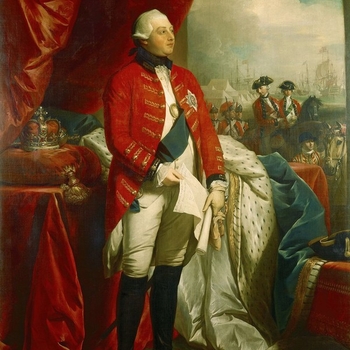
George III in Coronation Robes, by Allan Ramsay, c. 1761-1762. George III’s cloak is trimmed with ermine. Royal Archives/© Her Majesty Queen Elizabeth II 2019
The papers of George III and George IV entered the Royal Archives when it was first established in 1914. The survival of this apparently long-lost collection was extremely fortunate: the papers were found in the basement of Apsley House, the London residence of the Duke of Wellington, in 1912, nearly a century after they had been placed there by the first Duke, the principal executor of George IV, labelled ‘To be destroyed unread’. Fortunately, this instruction was never carried out and the fourth Duke of Wellington was able to present the papers to King George V.
The re-discovery of this collection means that George III is the first Sovereign whose papers are held in the Royal Archives. Any surviving official papers of earlier monarchs can generally be found in government records held by The National Archives at Kew; however, George I and George II left little in the form of a written legacy. George I in particular had poor command of English and most government business was carried out by word of mouth during the reigns of the first two Sovereigns of the House of Hanover. Nonetheless, in the collection of George III, there is a small amount of his grandfather’s and great-grandfather’s papers, as well as some belonging to his mother and father, Frederick and Augusta, Prince and Princess of Wales, and his siblings.
The papers of George III form three distinct series: his official papers, his private papers (which include some Privy Purse accounts) and his correspondence with his siblings and children. The King’s official papers shed light on political matters and foreign affairs, principally between 1765 and 1810, before his illness forced the establishment of the Regency. In the form of correspondence, ministerial reports, Cabinet meetings and proceedings of Parliament, these records deal with civil, military and ecclesiastical matters, as well as the varied political issues of the time, and all reflect George III’s interest and knowledge of such topics. Foreign affairs are particularly well covered by the papers, including such subjects as the American War of Independence, European treaties and alliances, political dealings and trading links with China and relations with Russia and revolutionary France.
George III’s private papers, which date between 1755 and 1810, demonstrates the King’s wide variety of interests and passions in such diverse subjects as agriculture, science, astronomy, arts and literature . In addition, the King’s essays form an extremely valuable collection which amounts to over 2000 documents. This series, written mostly by George III or by his mentor, Lord Bute, formed an important part of the education of the Prince and future King and demonstrate his wide knowledge and intelligence. These essays are now available on Georgian Papers Online.
The correspondence George III maintained with his immediate family is also preserved in the Royal Archives. The collection includes relatively few letters from his consort Queen Charlotte as they spent little time apart; however those that do exist bear testimony to their loving marriage. Letters from the King’s seven sons and six daughters form a significant collection (the King and Queen had fifteen children in total, although two sons died in infancy) and these illustrate the close relationship the King had with his children and the concern he felt for their welfare and worthy conduct. The family correspondence also contains letters to George III from his royal relatives in Europe.
Regretfully, the papers of Queen Charlotte, consort of George III, were destroyed after her death in 1818. A few of the Queen’s account books have survived, which show overall payments to tradesmen for items purchased for both the royal nursery and herself, as well as a very few volumes of her diary from the years 1789 and 1794. Many letters sent by Queen Charlotte, including a significant amount written to her eldest son, the future George IV, have been preserved in the Royal Archives however, and for the first time, all papers relating to Queen Charlotte have been brought together and are now available on Georgian Papers Online.

